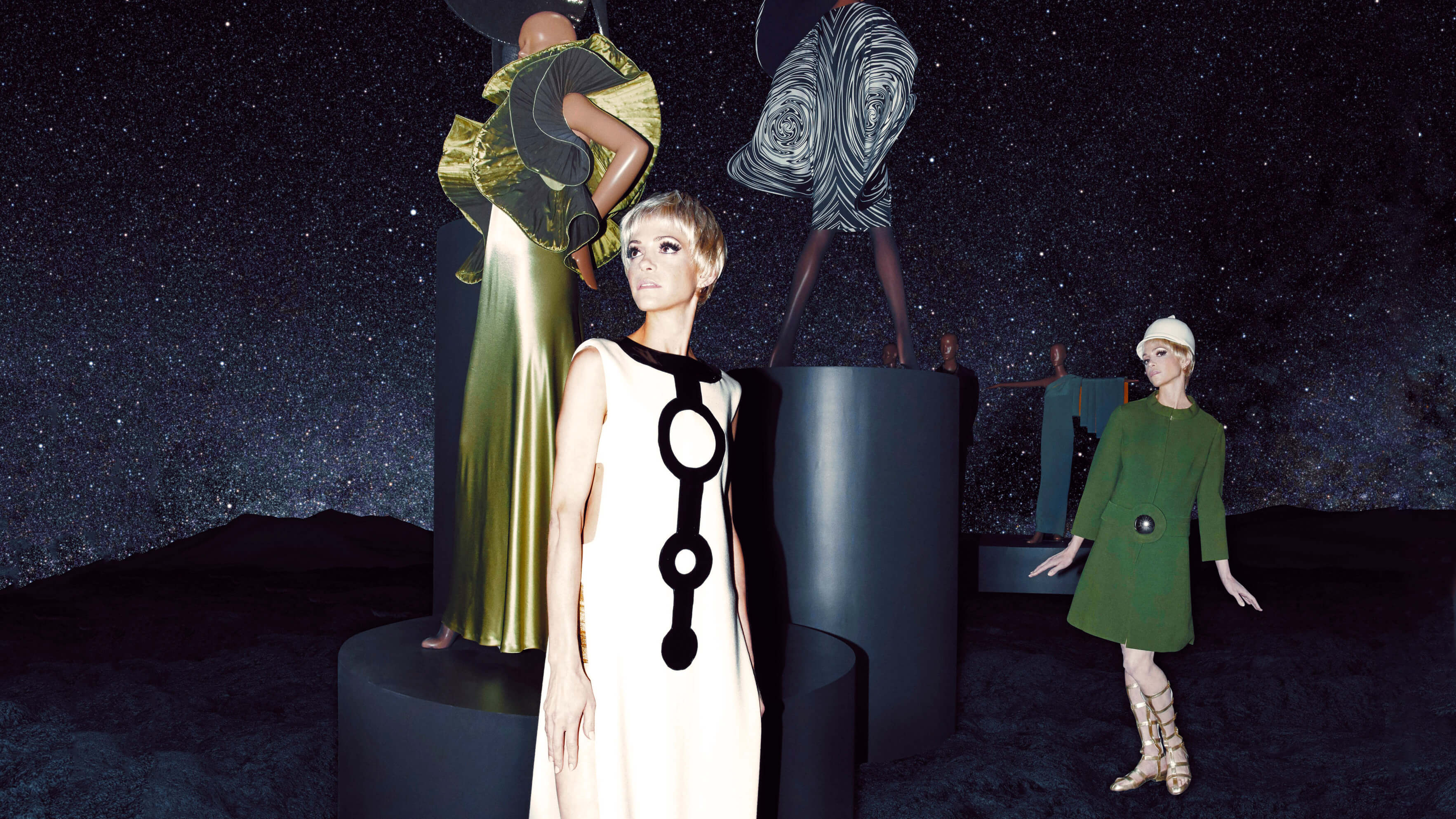With the gaze of Apollo, Pierre Cardin has fashioned his place on earth to reflect the starburst galaxy in his mind. Imagine a sci-fall dance hall of architectonic designs piped with the song of a lunar harpsichord, look up and there she is, the infinite night sky, dusted with stars, shimmering with constellations. A half-century after the unrivaled demonstration of human ingenuity marked by man’s first steps on the moon, Pierre Cardin: Future Fashion has landed at the Brooklyn Museum. At the age of 97, Cardin’s legacy and adaptationist model of the fashion industry is given something of a cosmic rebirth.
“The clothes I prefer are the garments I invent for a lifestyle that does not yet exist — the world of tomorrow,” said Cardin. The creator of a new frontier, continuously evolving as demonstrated in the Brooklyn Museum’s retrospective which traverses over seven-decades of Cardin’s work. Mastering his craft early on, Cardin launched his career after an auspicious hand in the party of the century, Le bal oriental held in 1951 at Palazzo Labia in Venezia where he designed lavish costumes for those elite members of le dolce vita society. Cardin would go on to invent the look of the future for everyone: cylinders, cones, spheres, parabolic lines, his iconic designs defined the space age ‘60s. An extra planetary environment with a heightened awareness towards possibility, NASA, a new organization with new goals and its milestone achievement, set the tone for innovation and restructuring, Starship Enterprise.
A piece of the moon could be yours too. At the dawn of democratized fashion was Pierre Cardin, the first designer to bring ready-to-wear to the people, bobbing with optimism the world of fashion would never be the same, nor would the business model. Introducing the concept of brand awareness, robustness and flexibility, in the late 1960’s Cardin went where no couture designer had ventured before by licensing his name both in and outside of fashion. A true explorer with a voracious appetite for futurism, this afforded him his independence and the ability to extend and integrate with a bauhaus sensibility his outer space aesthetic into a total work of art life.
Fashion as in the verb, the transformation of one thing usefully and often unexpectedly into something else. The human body as a streamlined outline, unisex design, couture furniture, sculptures utilitaires, industrial design encompassing lighting and vehicles, Cardin did it all ecstatically. He bridged cultures and disciplines, the first international fashion brand to enter the Chinese market, the first to hold a fashion show in Moscow’s Red Square, the first “civilian” to wear the Apollo 11 spacesuit that touched the moon. There even exists a joyous bubbling landmark of architecture for alternate life on the French Rivera, Palais Bulles, a symbolic component of Cardin’s utopia.
Images of space collide, cosmonauts drifting through my open mind become me. Poised across the universe, a mini dress with shiny eyes, the milky way encircles me with open sides, a silver sphere at the center of a serpent guise slips away. Nearby a spiral galaxy still feels like the future today.
Orbit the world of Pierre Cardin: Future Fashion in 360 degrees, an interactive experience created in collaboration with Terry Gates.
Pierre Cardin original designs from the 1960s in order of appearance: Pierre Cardin, Bullseye mini dress, 1965, New York Vintage Archive Collection; Pierre Cardin, Wool tunic with vinyl trim and keyhole design, c. 1960s, New York Vintage Archive Collection; Pierre Cardin, Cloak with sphere closure, c. 1960s, What Goes Around Comes Around Archive Collection, Wool hat, c. 1960s, New York Vintage Archive Collection, Gladiator Sandals in Gold, c. 1960s, New York Vintage Archive Collection;
Pierre Cardin: Future Fashion, Brooklyn Museum
Makeup by Tomomi Sano, Hair by Rochelle Walker, Video by Terry Gates, Music by Geoffrey Pugen
